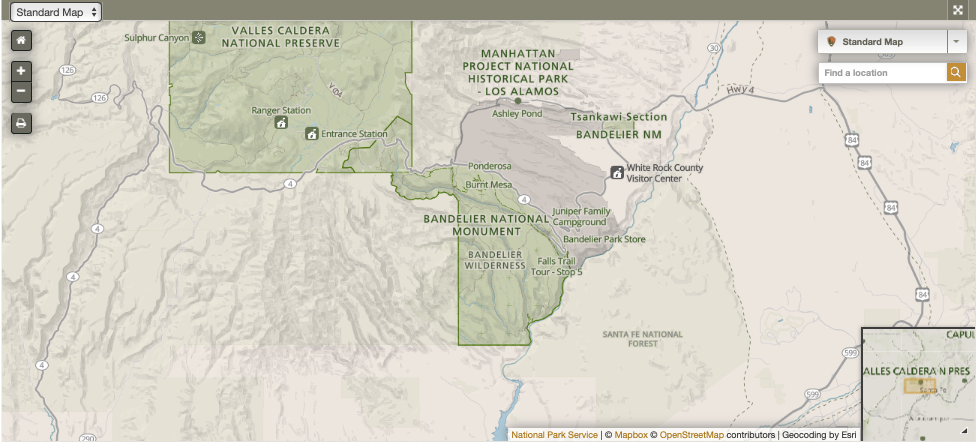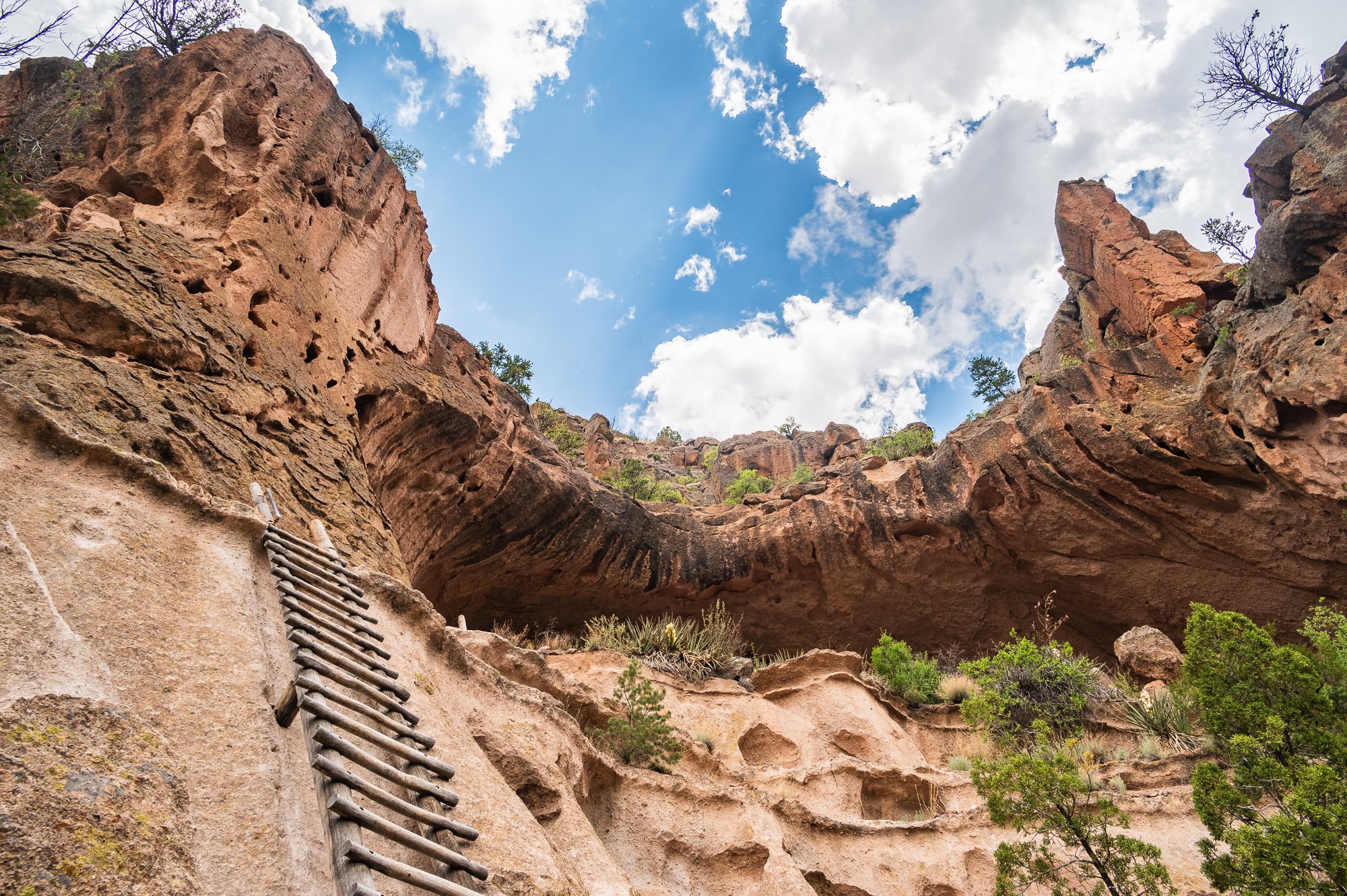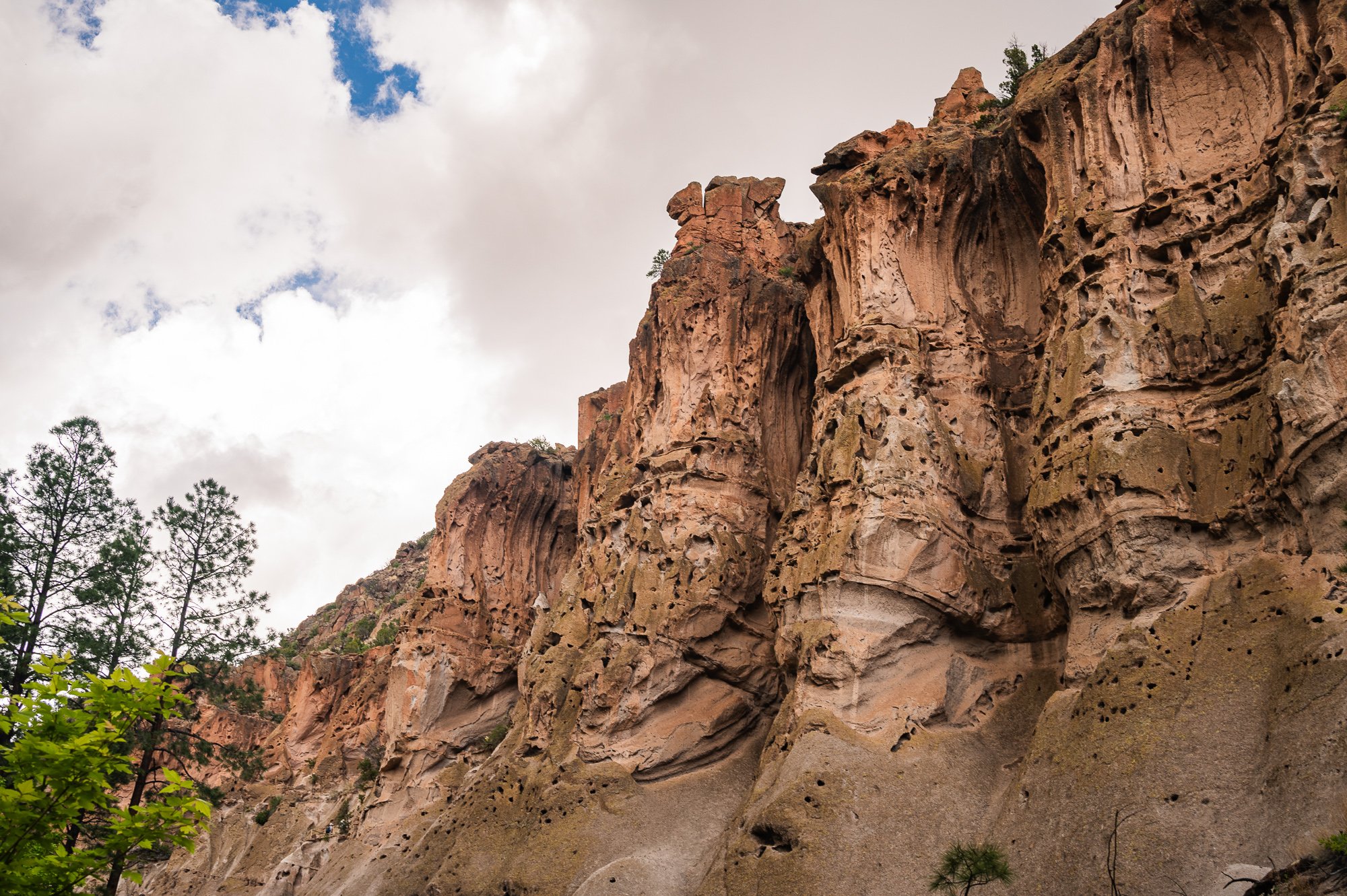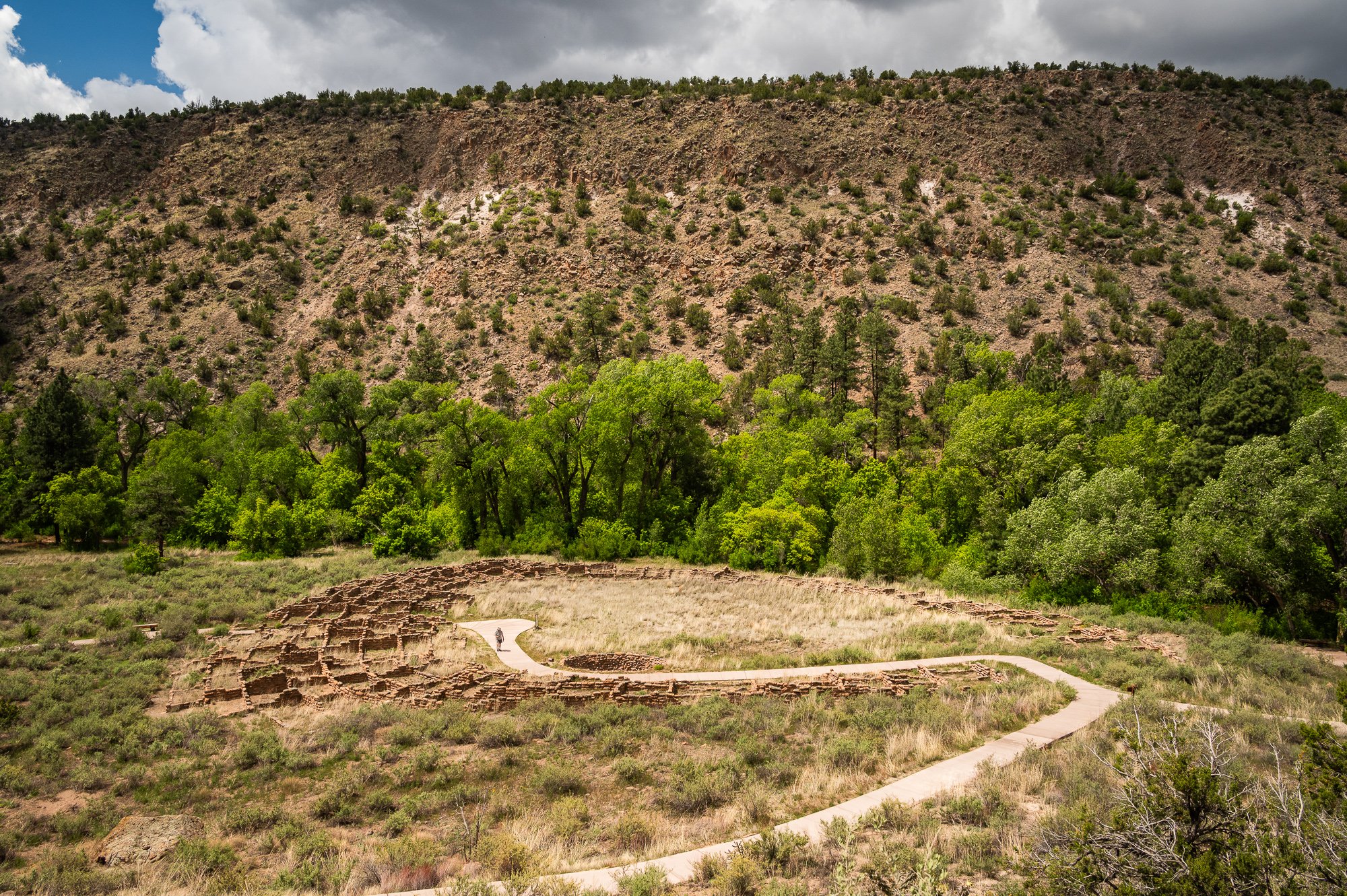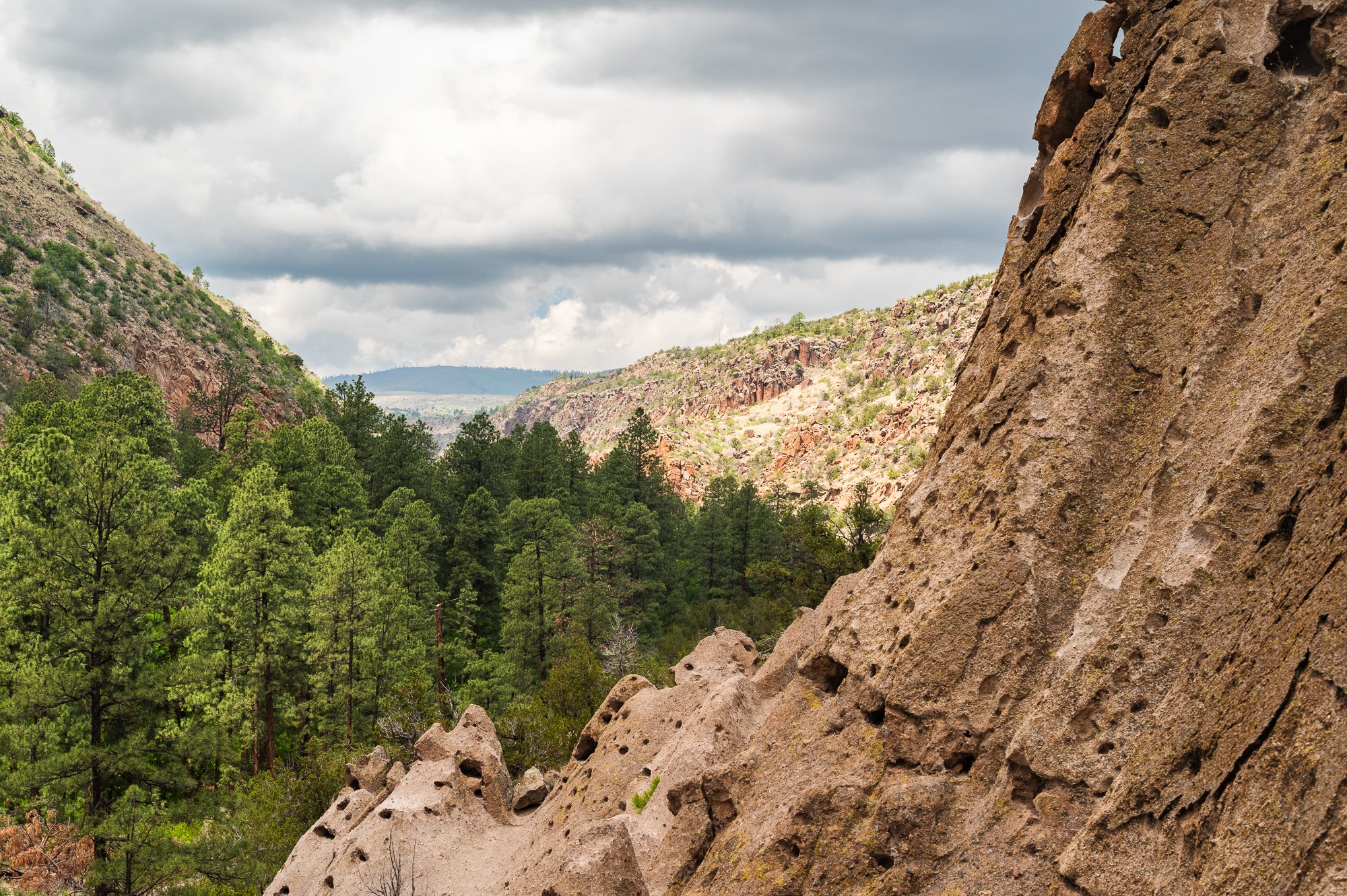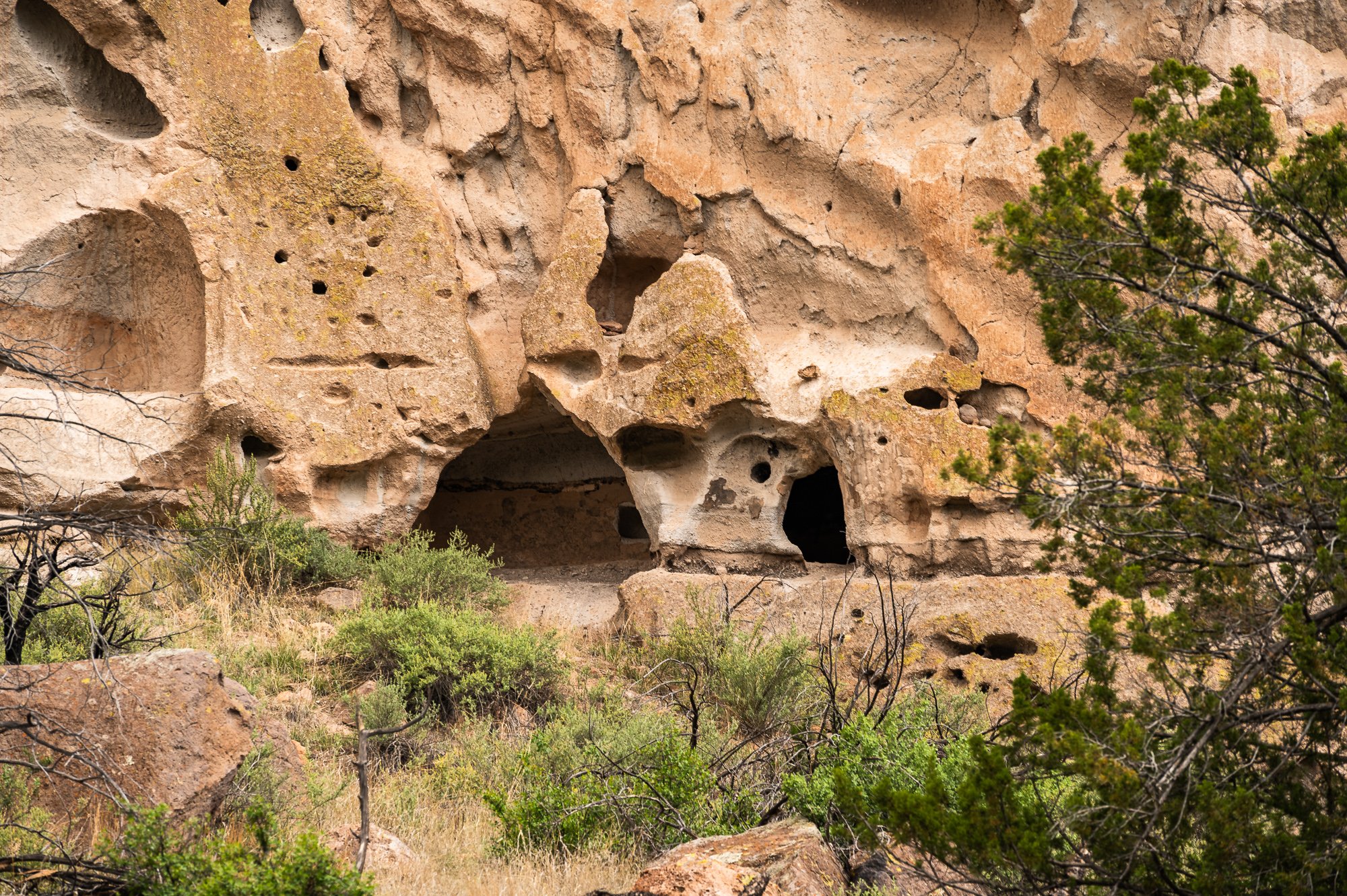Bandelier National Monument, New Mexico
Bandelier National Monument protects over 33,000 acres of ruggedly beautiful canyon and mesa country. Petroglyphs, dwellings carved into the soft rock cliffs, and standing masonry walls pay tribute to the early days of a culture that still survives in the surrounding communities.
The Ancestral Pueblo people lived here from approximately 1150 CE to 1550 CE. They built homes carved from the volcanic tuff and planted crops in mesa top fields. Corn, beans, and squash were central to their diet, supplemented by native plants and meat from deer, rabbit, and squirrel. Domesticated turkeys were used for both their feathers and meat while dogs assisted in hunting and provided companionship. By 1550, the Ancestral Pueblo people had moved from this area to pueblos along the Rio Grande. After over 400 years the land here could no longer support the people and a severe drought added to what were already becoming difficult times. Oral traditions tell us where the people went and who their descendants are. The people of Cochiti Pueblo, located just south and east along the Rio Grande, are the most direct descendants of the Ancestral Pueblo people who built homes in Frijoles Canyon. Likewise, San Ildefonso is most closely linked to Tsankawi.
Source: NPS, Wikipedia
Our Visit
Date: May 23, 2023
This is our first stop of our New Mexico roadtrip out of Santa Fe. Bandelier National Monument is a very unique place to visit. It offers an up-close look at prehistorical American Indian dwellings. On the way to the visitor center, you will stop at an outlook site which offers a view to the site in the canyon. You may not know what you were seeing at that time, except some orange-toned cliff rocks with holes on your right hand side. From the visitor center, there is a 1.2-mile paved Main Loop Trail that everyone walks to see the ruins of Tyuonyi Pueblo - a round pueblo built in the 1300s with 400 rooms. It was abandoned by the time Spanish explorers arrived late in the 16th century. the trail continues to a series of cliff dwellings, a few of which offers ladders so that you can climb to have a closer look.
After descending, the elder in the family returned to the visitor center via a shandy nature trail. Me and kids went further by a side trial (1-mile round trip) to Alcove House, which is an enlarged natural cave 150-foot above the canyon floor. it is accessible by a series of ladders and steps. We did not see any petroglyphs though. The petroglyphs are designs chipped into a rock surface. We didn’t go further from here, but you can explore other trials in the area too.


